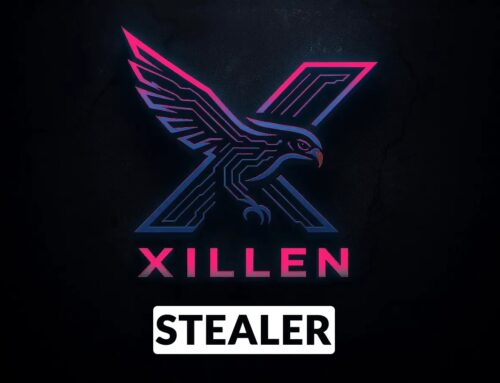
Ransomware Actors Primarily Targeting Retailers This Holiday Season to Deploy Malicious Payloads
The Holiday Ransomware Blitz: Retailers Under Siege
As the festive lights begin to twinkle and consumers gear up for peak shopping season, a far more sinister operation is also ramping up: ransomware attacks targeting the retail sector. Cybersecurity experts are observing a sharp increase in malicious activity, with threat actors strategically timing their assaults to coincide with the busiest sales periods. This coordinated effort aims to maximize disruption and leverage the immense pressure on retailers to maintain operations, thereby increasing the likelihood of exorbitant ransom payments. This holiday season, the battle for consumer dollars is being paralleled by a critical fight for digital integrity.
Understanding the Threat Landscape for Retail
The retail industry, with its intricate network of point-of-sale (PoS) systems, sprawling e-commerce backends, and delicate supply chains, presents a lucrative target for ransomware groups. During high-traffic periods like Black Friday, Cyber Monday, and the entire holiday rush, any system downtime translates directly into significant financial losses and irreparable reputational damage. Threat actors are acutely aware of this vulnerability, focusing their efforts on:
- Point-of-Sale (PoS) Networks: Disrupting the ability to process transactions halts revenue generation instantly.
- E-commerce Backends: Compromising online stores can lead to website outages, data breaches, and a complete cessation of digital sales.
- Supporting IT Systems: This includes systems that manage orders, customer loyalty programs, inventory, and logistics – all critical components for a smooth retail operation.
The motivation extends beyond mere financial gain; stolen customer data, including payment information and personal details, can be sold on dark web marketplaces, compounding the damage from a ransomware incident.
Tactics and Techniques of Ransomware Actors
Ransomware groups employ a variety of sophisticated tactics to infiltrate retail networks. These often begin with initial access vectors such as phishing campaigns, exploiting unpatched vulnerabilities, or brute-forcing weakly secured remote desktop protocol (RDP) connections. Once inside, attackers move laterally through the network, escalating privileges and identifying critical systems for encryption. Some common techniques include:
- Phishing and Spear-Phishing: Tailored emails designed to trick employees into divulging credentials or executing malicious attachments.
- Exploiting Software Vulnerabilities: Leveraging known flaws in operating systems, applications, or network devices. For example, a vulnerability like CVE-2023-38831 (WinRAR ACE format code execution) could provide an entry point if unpatched. Similarly, older critical vulnerabilities in widely used network devices, like those found in certain VPN appliances, remain a significant risk.
- Supply Chain Attacks: Compromising a vendor or partner that has access to the retailer’s network, effectively bypassing perimeter defenses.
- DDoS Attacks as Diversion: Some ransomware groups launch decoy Distributed Denial of Service (DDoS) attacks to distract security teams while they deploy ransomware.
Remediation Actions and Proactive Defense Strategies
For retailers, merely reacting to an attack is not enough. A proactive, multi-layered defense strategy is essential to mitigate the extreme risks posed by holiday ransomware campaigns. The following remediation actions and best practices are critical:
- Robust Patch Management: Regularly update and patch all operating systems, applications, and network devices. Prioritize critical security updates immediately.
- Strong Authentication Practices: Implement Multi-Factor Authentication (MFA) across all systems, especially for remote access, administrative accounts, and critical business applications.
- Employee Training and Awareness: Conduct simulated phishing exercises and regular cybersecurity awareness training to educate employees on recognizing and reporting suspicious activity.
- Network Segmentation: Isolate critical systems (like PoS, inventory management, and e-commerce servers) into separate network segments to limit lateral movement in case of a breach.
- Endpoint Detection and Response (EDR): Deploy EDR solutions on all endpoints to continuously monitor for malicious activity, detect threats, and enable rapid response.
- Comprehensive Backup Strategy: Implement a 3-2-1 backup rule: at least three copies of data, stored on two different media, with one copy offsite and offline. Regularly test backup restoration processes.
- Incident Response Plan: Develop and regularly drill a detailed incident response plan, ensuring all stakeholders understand their roles and responsibilities during a ransomware attack.
- Vulnerability Assessments and Penetration Testing: Periodically engage third-party security firms to conduct vulnerability assessments and penetration tests to identify and address weaknesses before attackers do.
- Secure Remote Access: Harden remote access solutions, enforce strong passwords, and limit access to only necessary personnel and IP addresses.
The Critical Need for Vigilance
The holiday shopping season represents a convergence of high stakes and heightened cyber risk for retailers. The financial pressure to maintain continuous operations, coupled with the potential for massive data breaches, makes them prime targets. A single successful ransomware attack can lead to millions in lost revenue, regulatory fines, and long-term damage to brand reputation. Therefore, maintaining peak vigilance, investing in robust cybersecurity measures, and fostering a culture of security throughout the organization are not just best practices – they are essential for survival in today’s threat landscape.
| Tool Name | Purpose | Link |
|---|---|---|
| Nessus | Vulnerability Scanning | https://www.tenable.com/products/nessus |
| CrowdStrike Falcon Insight EDR | Endpoint Detection & Response | https://www.crowdstrike.com/products/endpoint-security/falcon-insight-edr/ |
| Wireshark | Network Protocol Analyzer (for incident investigation) | https://www.wireshark.org/ |
| Veeam Backup & Replication | Data Backup and Recovery Solution | https://www.veeam.com/ |
| Mimikatz | Post-exploitation Tool (for testing, detection of credential theft) | https://github.com/gentilkiwi/mimikatz |
Key Takeaways for a Secure Holiday Season
Retailers face an acute and elevated threat from ransomware actors this holiday season. Threat groups are specifically targeting critical infrastructure like PoS systems and e-commerce platforms to maximize impact and extort payments during peak revenue periods. Proactive defense, including rigorous patching, strong authentication, employee awareness, and robust backup strategies, is paramount. Investing in comprehensive cybersecurity solutions and cultivating a resilient incident response capability will be crucial for retailers to navigate the holiday rush securely and successfully.





